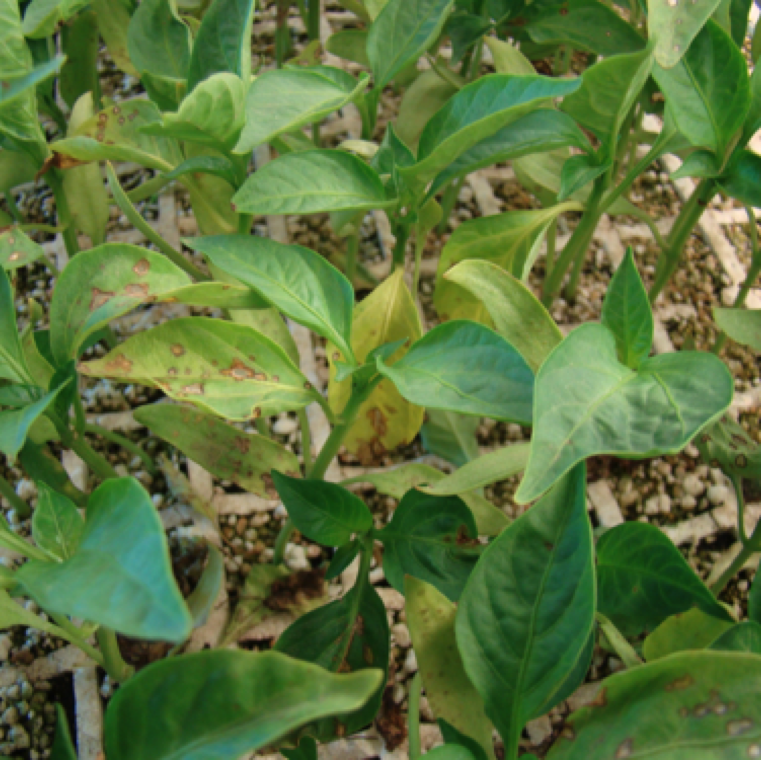

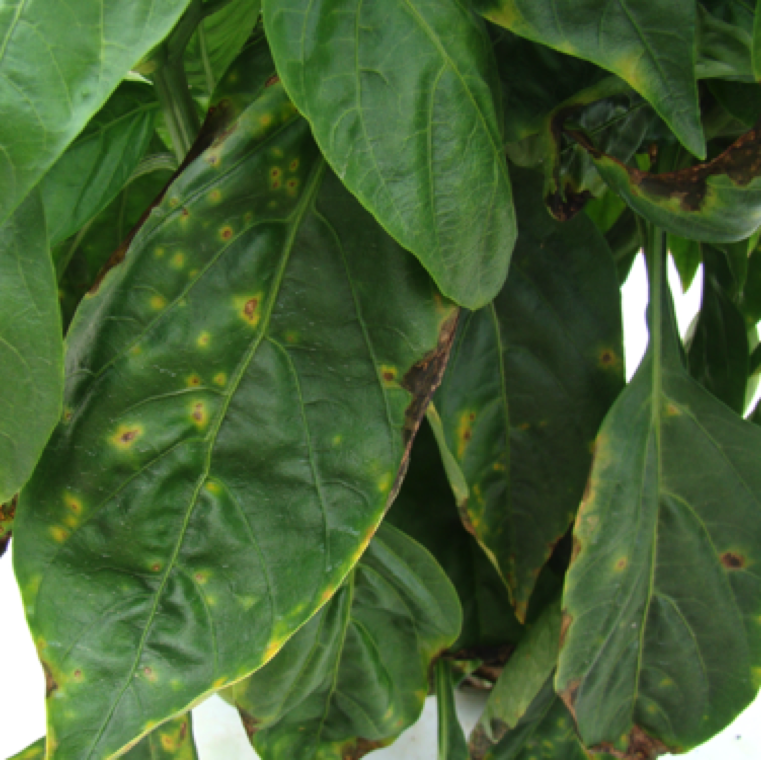
Bacterial spot of pepper can be a major issue in production in fall season in Florida. Warm temperatures, high rainfall and high humidity are ideal for disease occurrence and spread.
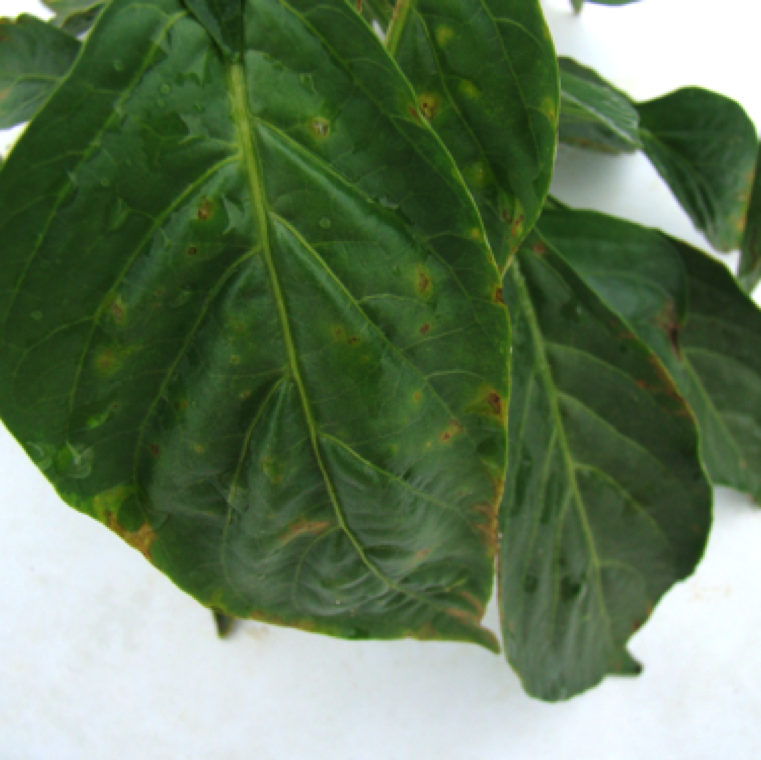
The disease can enter a field through use of contaminated seed and transplants. The bacterium can spread easily within a field by wind-driven rain.
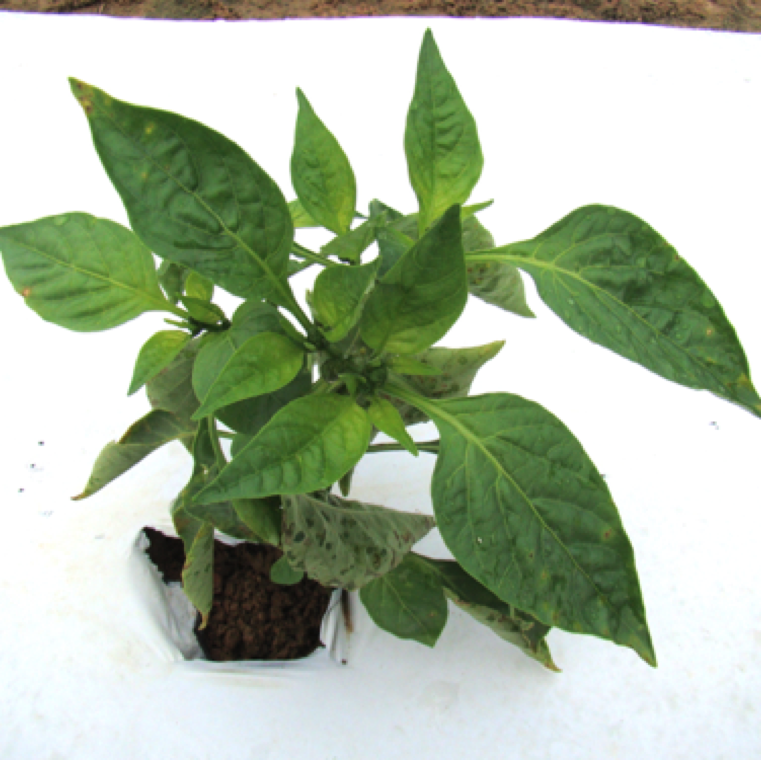
Spots on leaves start as as small water-soaked lesions which can be noticed typically on the underside of the leaves. The pathogen enters the plan through wounds and openings like stomates.
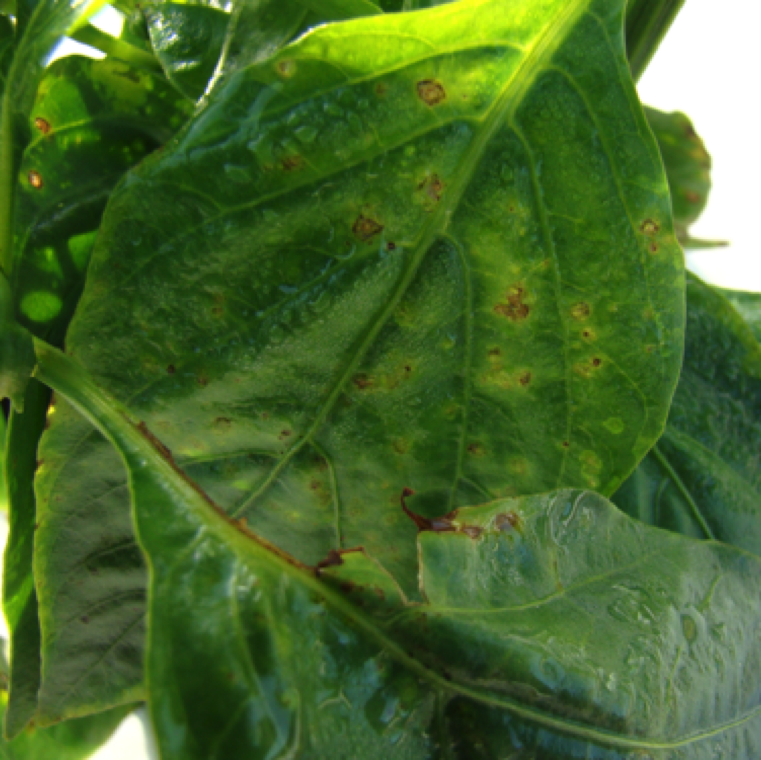
As the disease progress numerous small irregular lesions can be spotted on the the upper side of the leaves will eventually turn brown and become necrotic in the center.
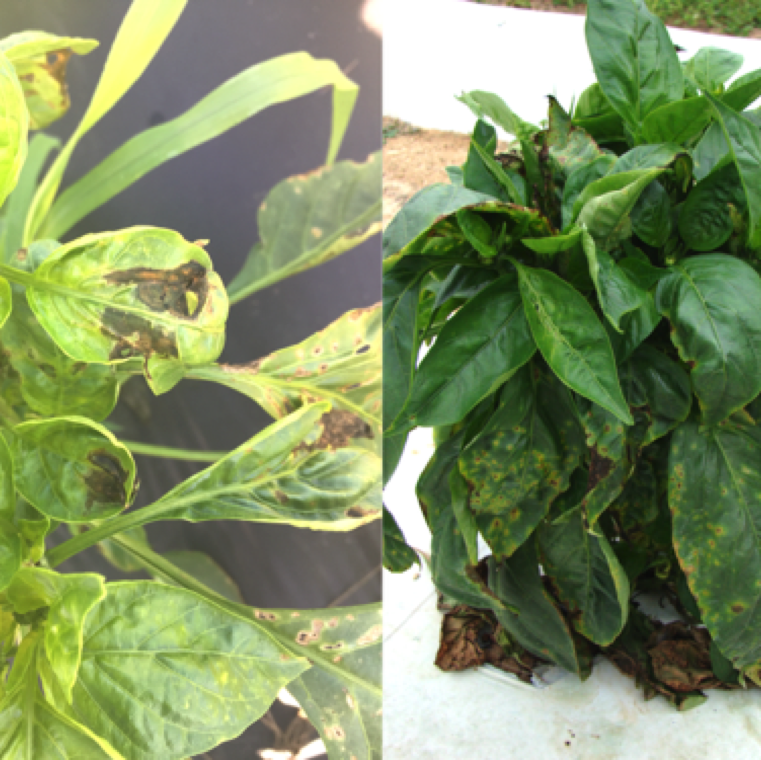
During heavy rainfall, severe water-soaking can be noticed on many leaves which will start to collapse. The plants that are severely infected may remain stunted with blighting and dropping of leaves.

The fruit lesions tend to be raised, and warty in appearance similar to bacterial spot of tomato. Lesions can also form on peduncle as seen here, and pedicel and flowers.
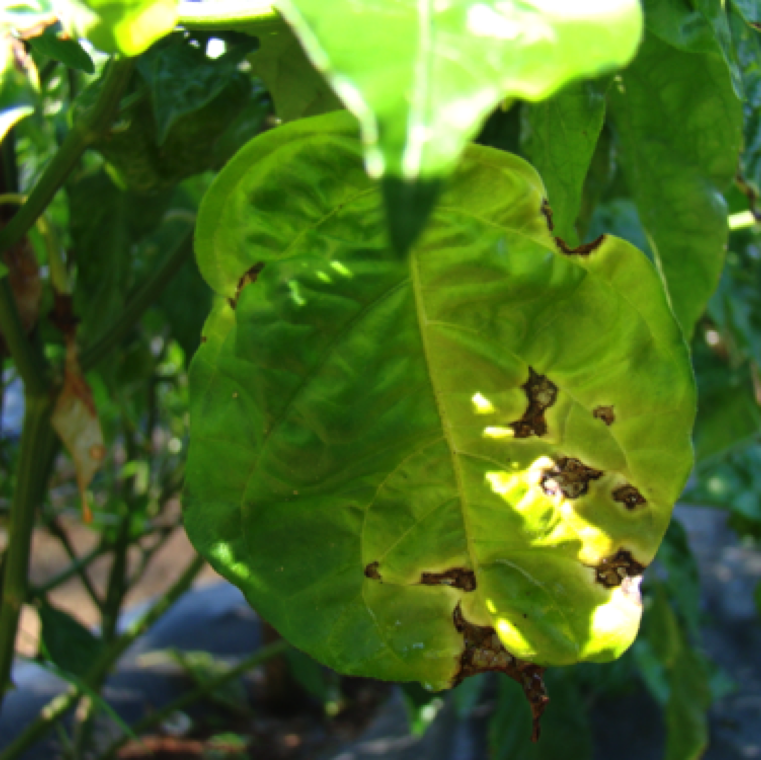
Leaf blighting can happen on the margin of the leaves, and fruit spot lesions can be also seen at times. The disease affects many typed of peppers including scotch bonnets shown here.
BACTERIAL SPOT
Bacterial causal agent: Xanthomonas campestris pv. vesicatoria, and X. vesicatoria
Pepper diseases

